Abstract
Forty-one patients with acceptable past histories of allergic reactions to benzylpenicillin (PG), eleven patients with questionable histories to PG and thirty patients without past histories of allergic reactions to PG were skin tested with various multivalent haptenic conjugates and with simple chemicals derived from PG in order to determine the antigenic specificities of penicillin hypersensitivity of the wheal-and-flare type. The benzylpenicilloyl (BPO) group was found to be the major haptenic determinant of wheal-and-flare type PG hypersensitivity. Twenty-nine per cent of patients with acceptable histories of PG allergy and 3 per cent of patients without histories of PG allergy gave positive wheal-and-flare reactions to multivalent BPO-conjugates. Three patients who had unusual clinical forms of PG allergic reactions demonstrated patterns of wheal-and-flare reactivity indicating D-penicillamine or D-benzylpenamaldic acid disulphide haptenic specificity. No unequivocal wheal-and-flare reactivity specific for the benzylpenicillenic acid haptenic group was observed in this study. Data were obtained which indicate that BPO-specific wheal-and-flare skin reactivity demonstrates specificity for the entire large BPO haptenic group, and also for structural areas of the immunizing autologous hapten-carrier protein (i.e. carrier specificity).
Full text
PDF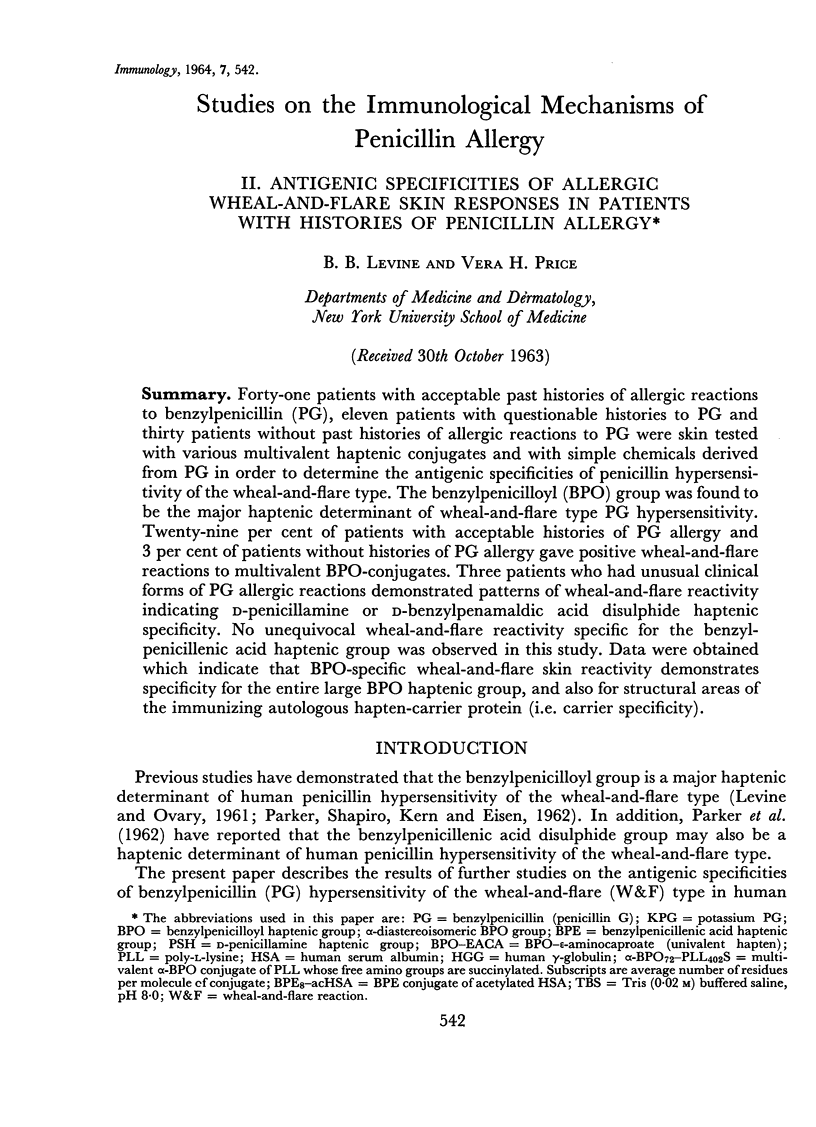

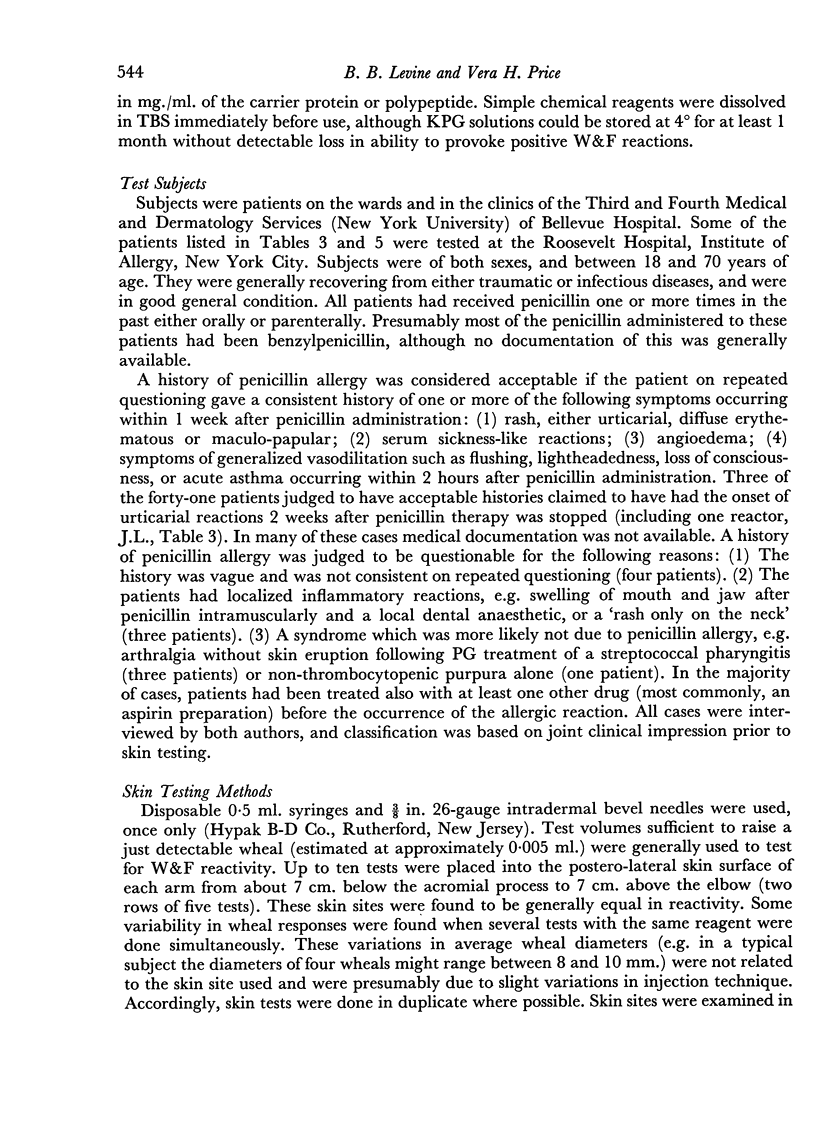
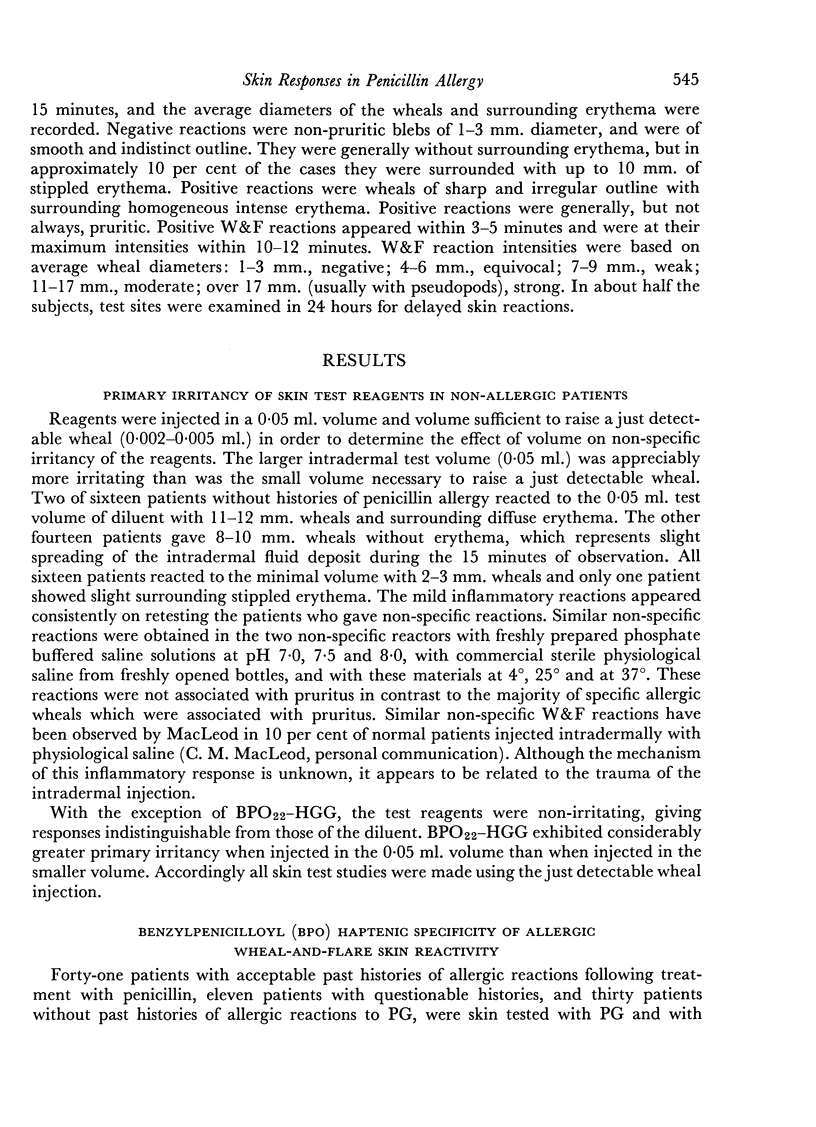
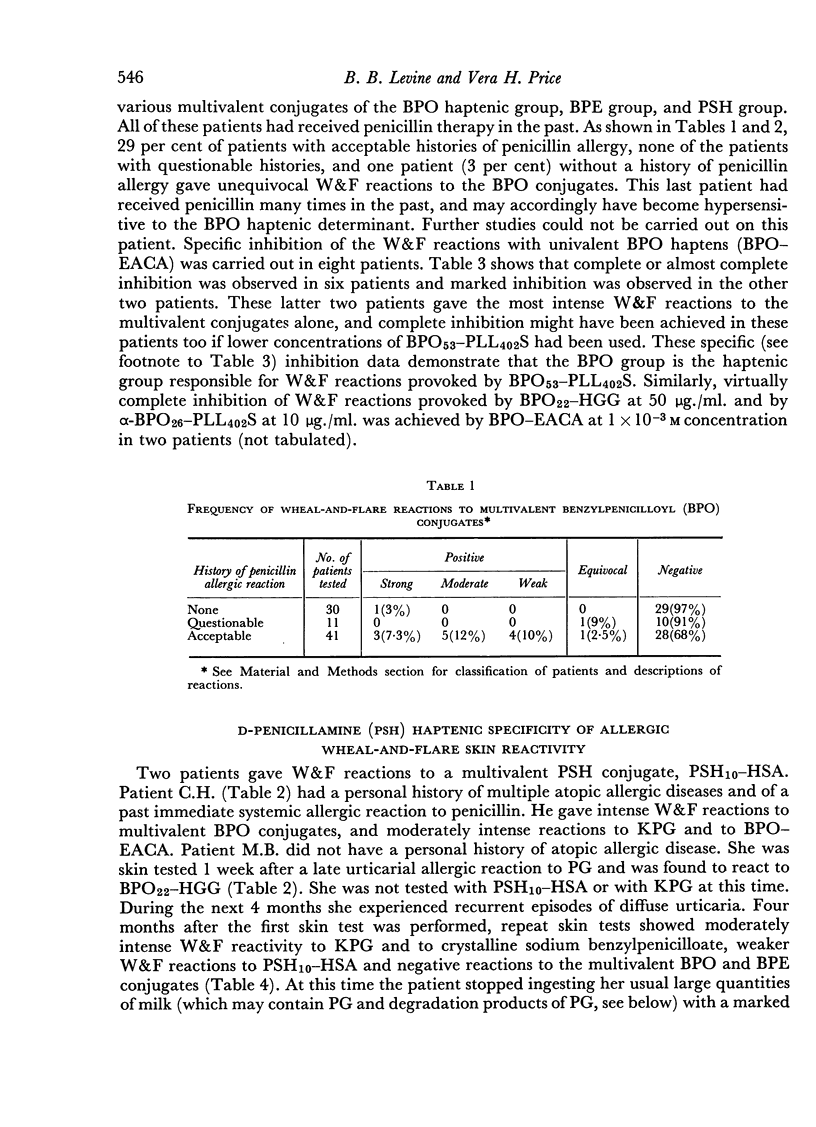
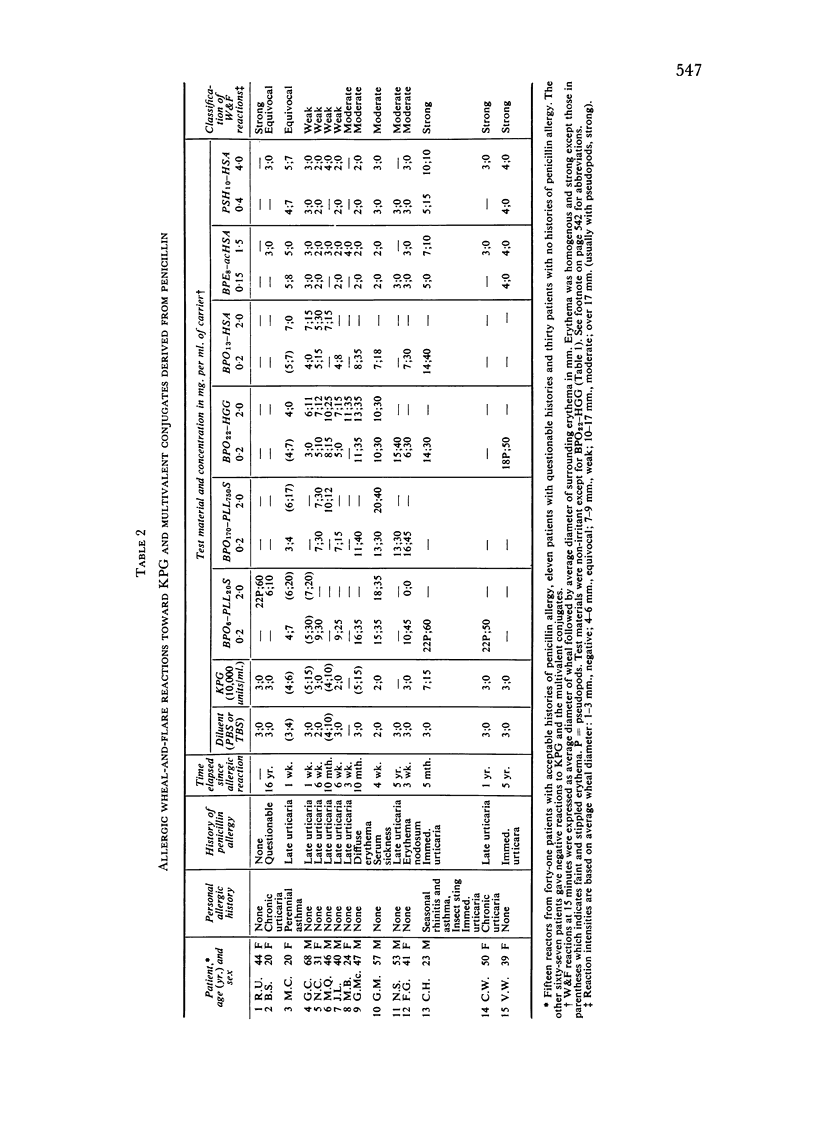
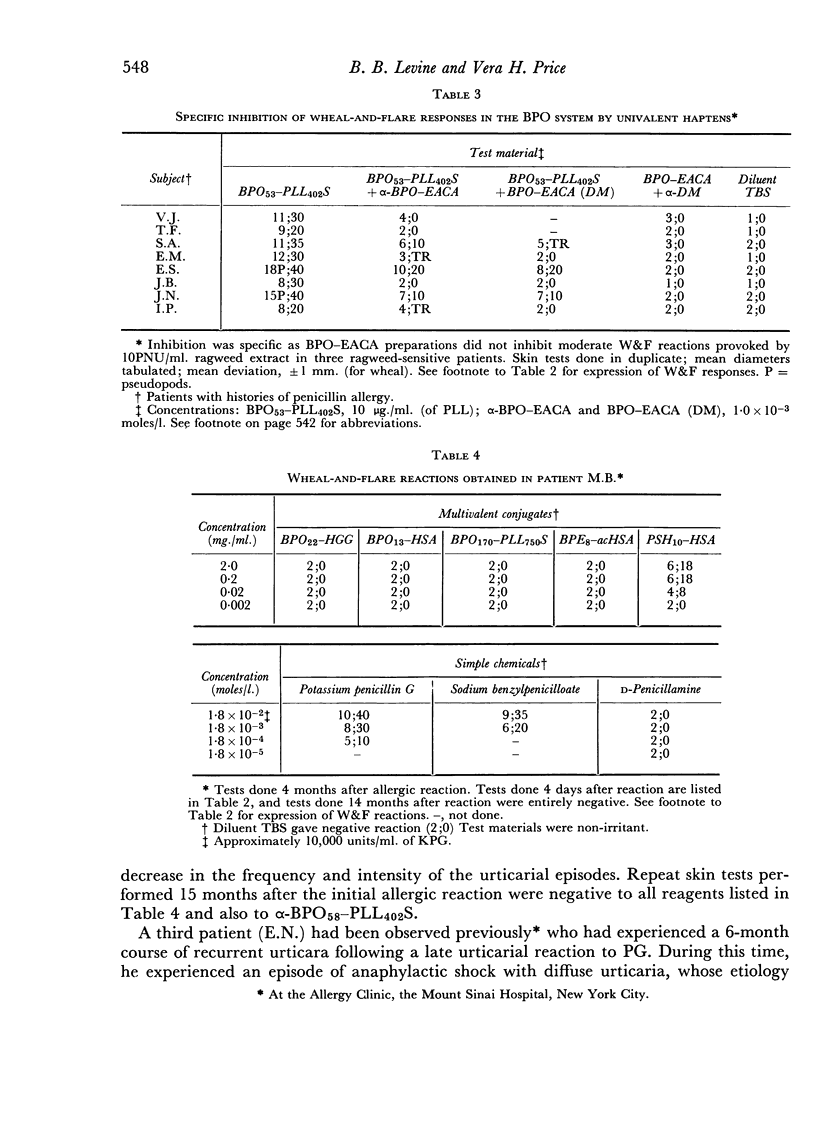
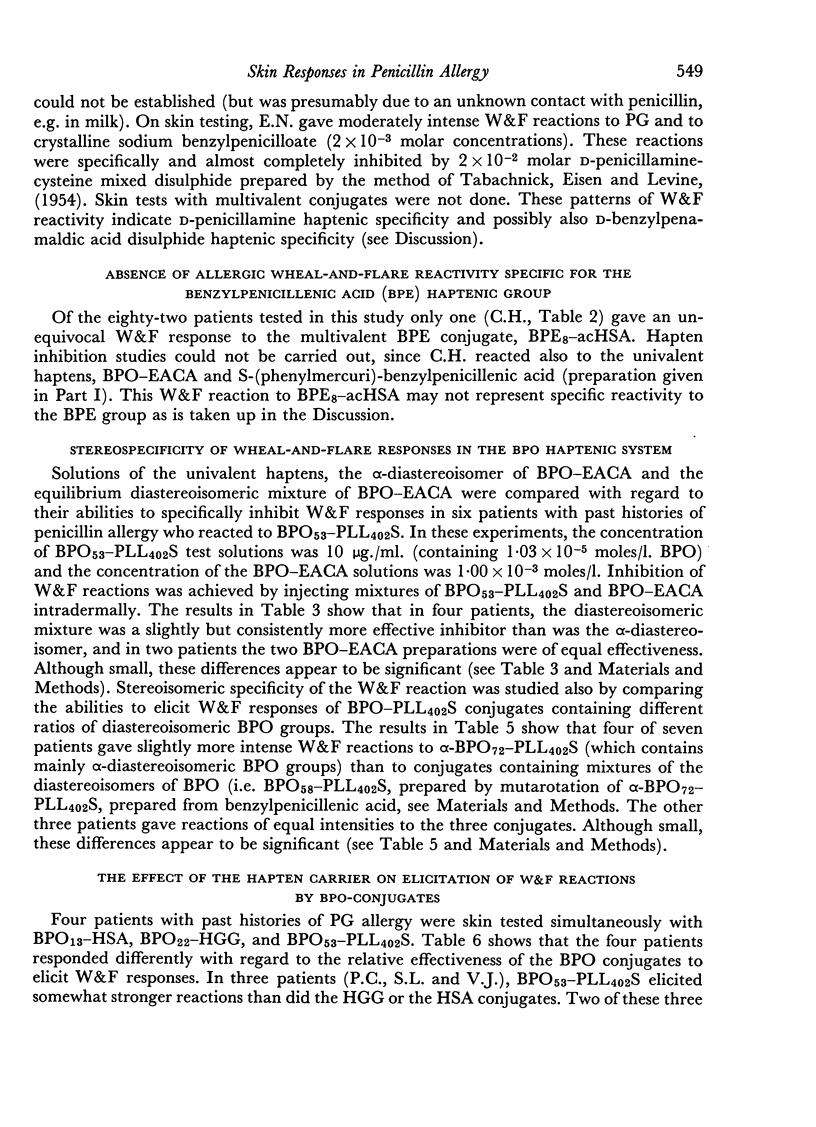
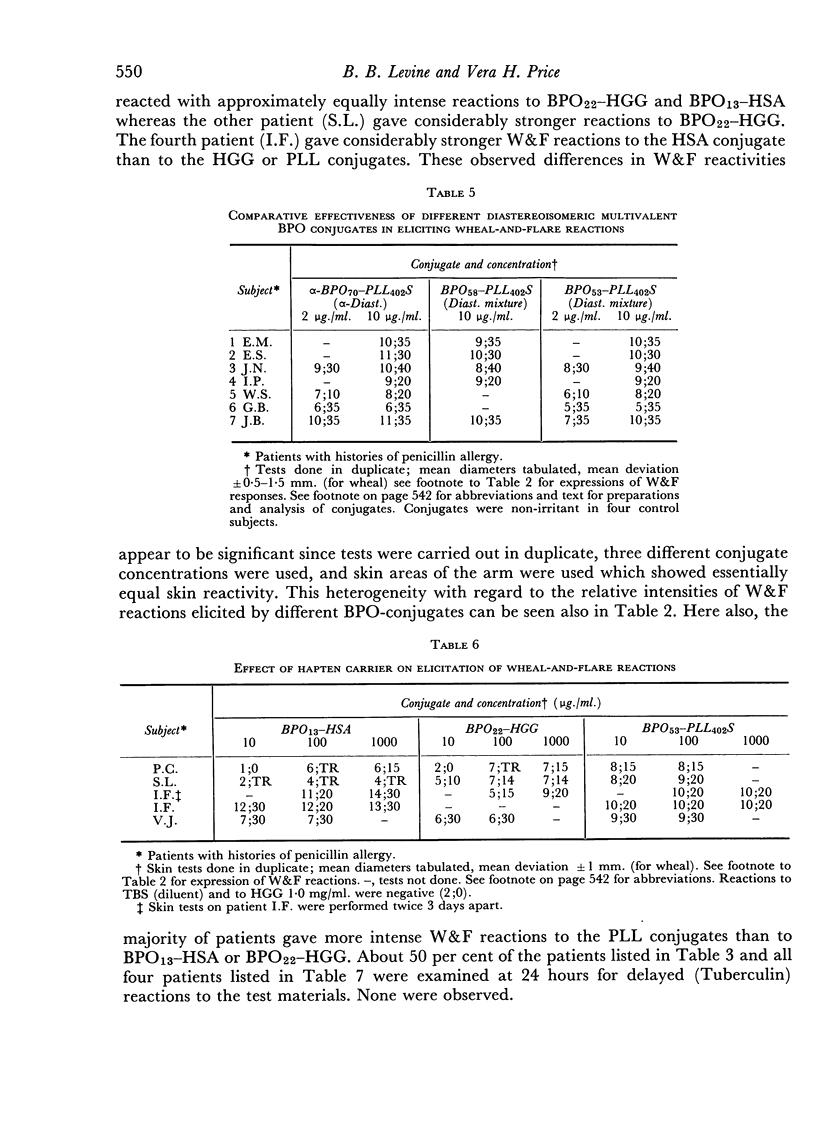

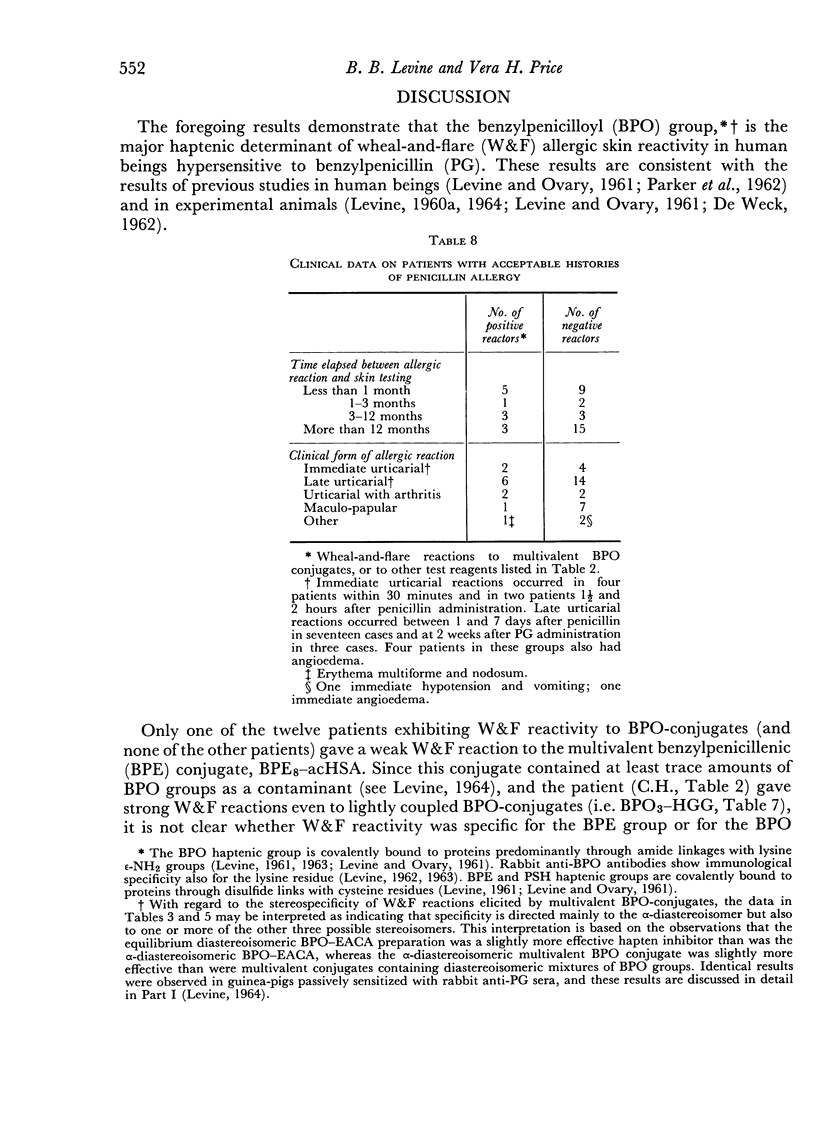

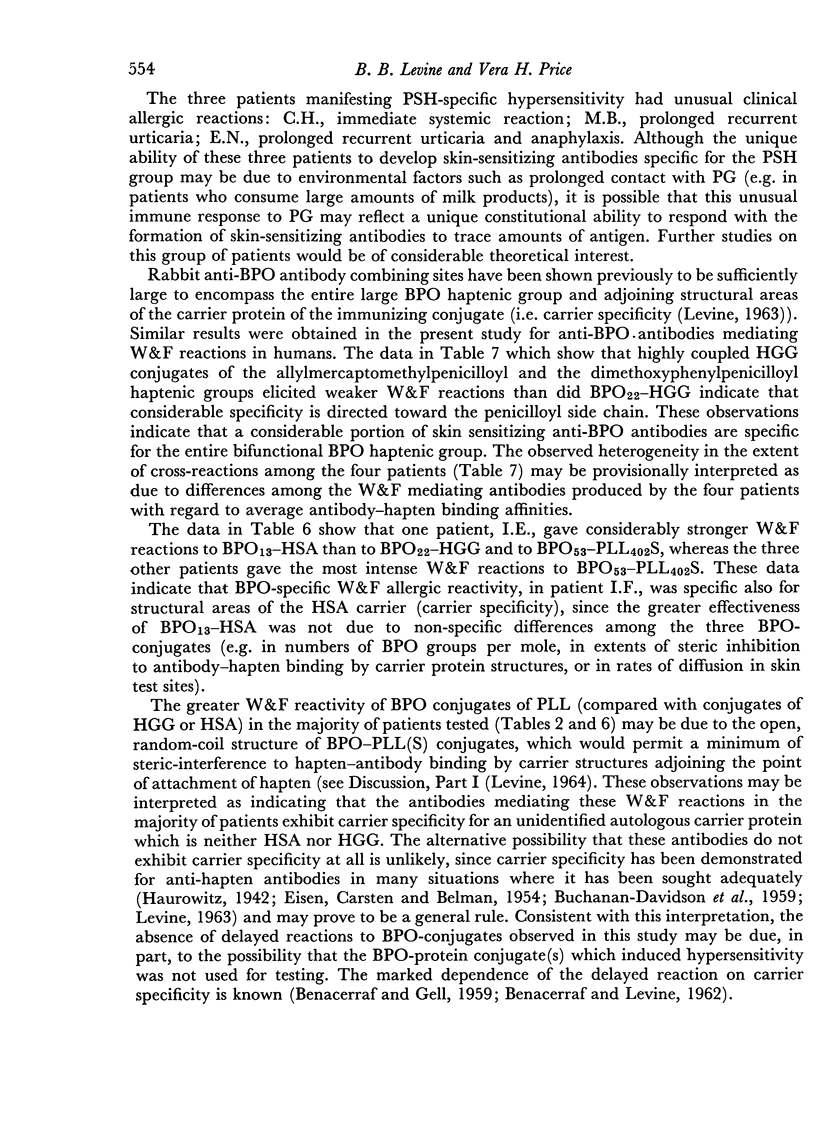
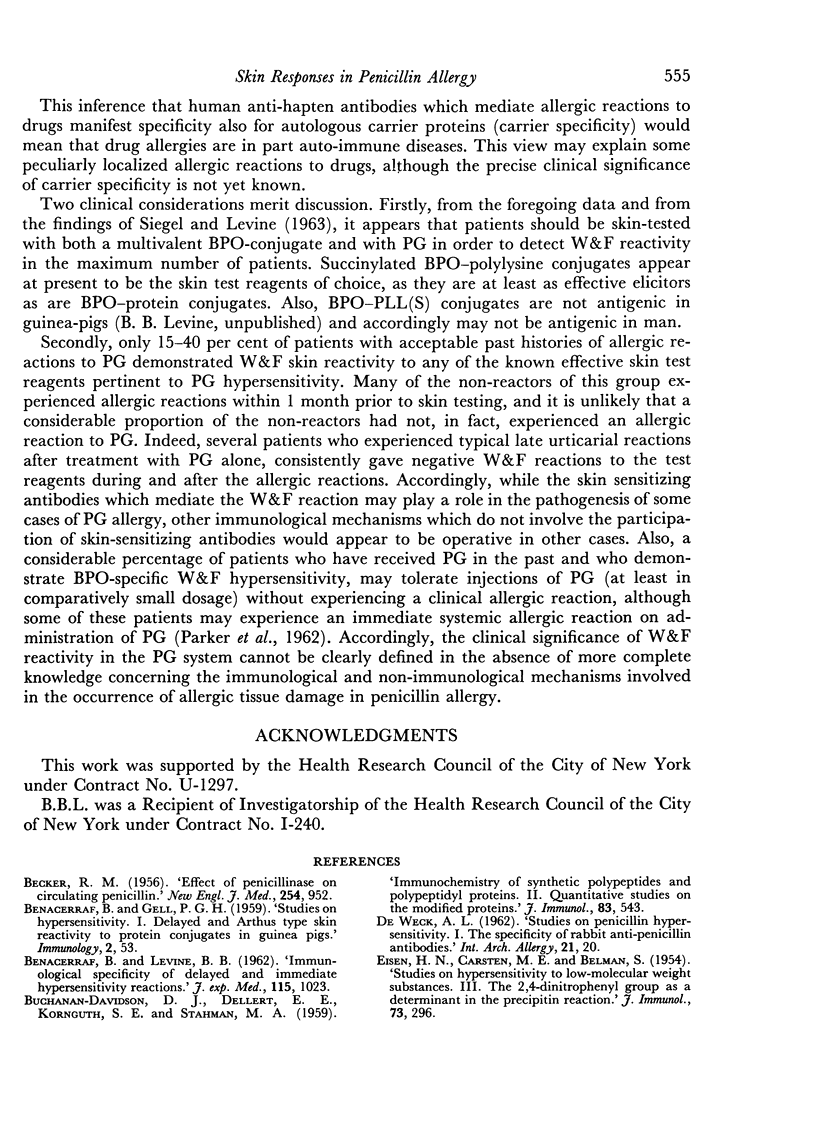
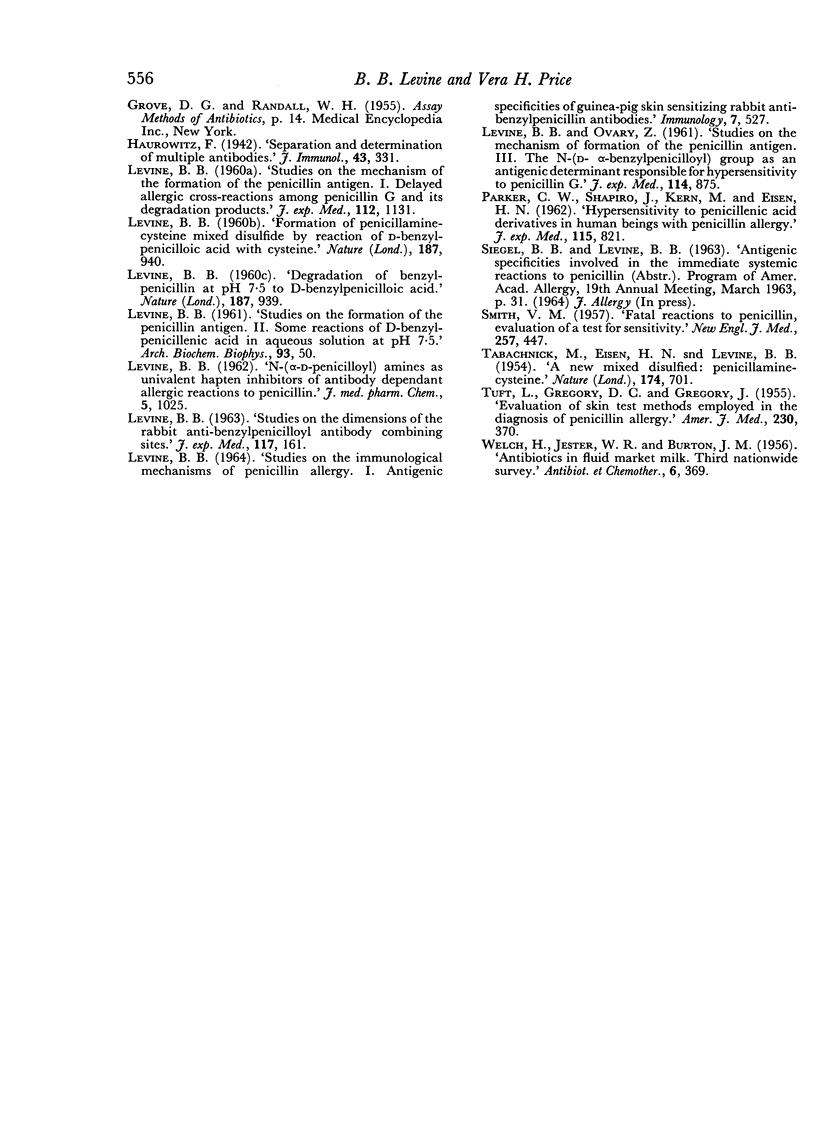
Selected References
These references are in PubMed. This may not be the complete list of references from this article.
- BECKER R. M. Effect of penicillinase on circulating penicillin. N Engl J Med. 1956 May 17;254(20):952–953. doi: 10.1056/NEJM195605172542007. [DOI] [PubMed] [Google Scholar]
- BENACERRAF B., GELL P. G. Studies on hypersensitivity. I. Delayed and Arthustype skin reactivity to protein conjugates in guinea pigs. Immunology. 1959 Jan;2(1):53–63. [PMC free article] [PubMed] [Google Scholar]
- BENACERRAF B., LEVINE B. B. Immunological specificity of delayed and immediate hypersensitivity reactions. J Exp Med. 1962 May 1;115:1023–1036. doi: 10.1084/jem.115.5.1023. [DOI] [PMC free article] [PubMed] [Google Scholar]
- BUCHANAN-DAVIDSON D. J., DELLERT E. E., KORNGUTH S. E., STAHMANN M. A. Immunochemistry of synthetic polypeptides and polypeptidyl proteins. II. Quantitative studies on the modified protiens. J Immunol. 1959 Nov;83:543–551. [PubMed] [Google Scholar]
- DE WECK A. L. Studies on penicillin hypersensitivity. I. The specificity of rabbit "anti-penicillin" antibodies. Int Arch Allergy Appl Immunol. 1962;21:20–37. doi: 10.1159/000229312. [DOI] [PubMed] [Google Scholar]
- EISEN H. N., CARSTEN M. E., BELMAN S. Studies of hypersensitivity to low molecular weight substances. III. The 2,4-dinitrophenyl group as a determinant in the preciptin reaction. J Immunol. 1954 Nov;73(5):296–308. [PubMed] [Google Scholar]
- LEVINE B. B. Degradation of benzylpenicillin at pH 7.5 to D-benzylpenicilloic acid. Nature. 1960 Sep 10;187:939–940. doi: 10.1038/187939a0. [DOI] [PubMed] [Google Scholar]
- LEVINE B. B. Formation of D-penicillamine-cysteine mixed disulphide by reaction of D-benzylpenicilloic acid with cystine. Nature. 1960 Sep 10;187:940–941. doi: 10.1038/187940a0. [DOI] [PubMed] [Google Scholar]
- LEVINE B. B. N(ALPHA-D-PENICILLOYL) AMINES AS UNIVALENT HAPTEN INHIBITORS OF ANTIBODYDEPENDENT ALLERGIC REACTIONS TO PENICILLIN. J Med Pharm Chem. 1962 Sep;91:1025–1034. doi: 10.1021/jm01240a016. [DOI] [PubMed] [Google Scholar]
- LEVINE B. B., OVARY Z. Studies on the mechanism of the formation of the penicillin antigen. III. The N-(D-alpha-benzylpenicilloyl) group as an antigenic determinant responsible for hypersensitivity to penicillin G. J Exp Med. 1961 Dec 1;114:875–904. doi: 10.1084/jem.114.6.875. [DOI] [PMC free article] [PubMed] [Google Scholar]
- LEVINE B. B. STUDIES ON THE IMMUNOLOGICAL MECHANISMS OF PENICILLIN ALLERGY. I. ANTIGENIC SPECIFICITIES OF GUINEA-PIG SKIN SENSITIZING RABBIT ANTI-BENZYLPENICILLIN ANTIBODIES. Immunology. 1964 Sep;7:527–541. [PMC free article] [PubMed] [Google Scholar]
- LEVINE B. B. Studies on the dimensions of the rabbit antibenzylpenicilloyl antibody-combing sites. J Exp Med. 1963 Jan 1;117:161–183. doi: 10.1084/jem.117.1.161. [DOI] [PMC free article] [PubMed] [Google Scholar]
- LEVINE B. B. Studies on the formation of the penicillin antigen. II. Some reactions of D-benzylpenicillenic acid in aqueous solution at pH 7.5. Arch Biochem Biophys. 1961 Apr;93:50–55. doi: 10.1016/0003-9861(61)90314-9. [DOI] [PubMed] [Google Scholar]
- LEVINE B. B. Studies on the mechanism of the formation of the penicillin antigen. I. Delayed allergic cross-reactions among penicillin G and its degradation products. J Exp Med. 1960 Dec 1;112:1131–1156. doi: 10.1084/jem.112.6.1131. [DOI] [PMC free article] [PubMed] [Google Scholar]
- PARKER C. W., SHAPIRO J., KERN M., EISEN H. N. Hypersensitivity to penicillenic acid derivatives in human beings with penicillin allergy. J Exp Med. 1962 Apr 1;115:821–838. doi: 10.1084/jem.115.4.821. [DOI] [PMC free article] [PubMed] [Google Scholar]
- TABACHNICK M., EISEN H. N., LEVINE B. A new mixed disulphide: penicillamine-cysteine. Nature. 1954 Oct 9;174(4432):701–702. doi: 10.1038/174701b0. [DOI] [PubMed] [Google Scholar]
- TUFT L., GREGORY D. C., GREGORY J. Evaluation of skin testing methods employed in the diagnosis of penicillin allergy. Am J Med Sci. 1955 Oct;230(4):370–379. doi: 10.1097/00000441-195510000-00002. [DOI] [PubMed] [Google Scholar]


